
Plugins in the Opera program are small additions whose work, in contrast to extensions, is often invisible, but, nevertheless, they are perhaps even more important elements of the browser. Depending on the functions of a particular plug-in, it can provide video online, play flash animation, displaying another web page element, providing high-quality sound, etc. Unlike extensions, plug-ins work almost without user intervention. They cannot be downloaded in the Opera Additions section, as they are installed in the browser most often along with the installation of the main program on the computer, or are downloaded separately from third-party sites.
At the same time, there is a problem when because of a failure or intentional shutdown, the plugin stopped functioning. As it turned out, not all users know how to include plugins in the opera. Let's deal with this question in detail.
Opening a section with plugins
Many users do not even know how to get into the plug-in section. This is explained by the fact that the transition point to this section by default in the menu is hidden.
First of all, go to the main menu of the program, we bring the cursor to the "Other Tools" section, and then in the pop-up list, select the Developer menu item.
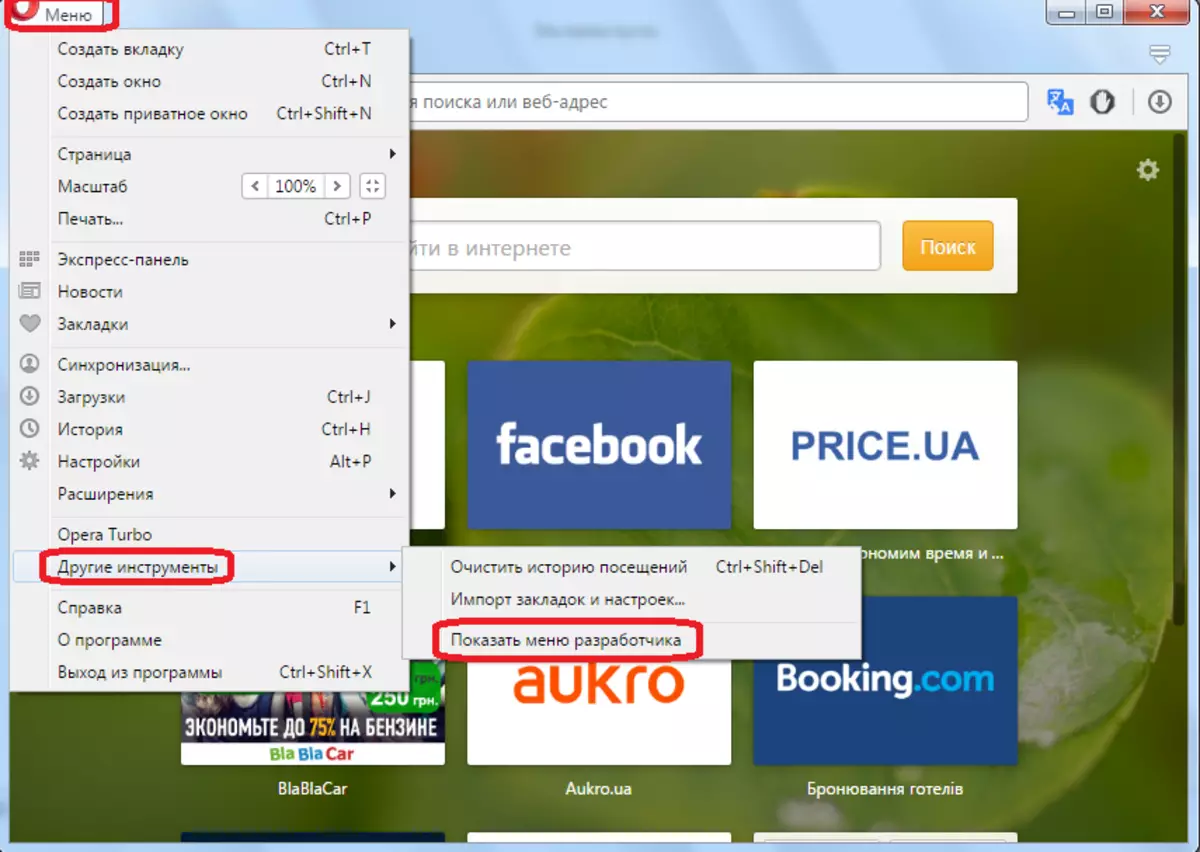
After that, we go to the main menu again. As you can see, a new item appeared - "Development". We bring the cursor on it, and in the menu that appears, select the plug-in item.
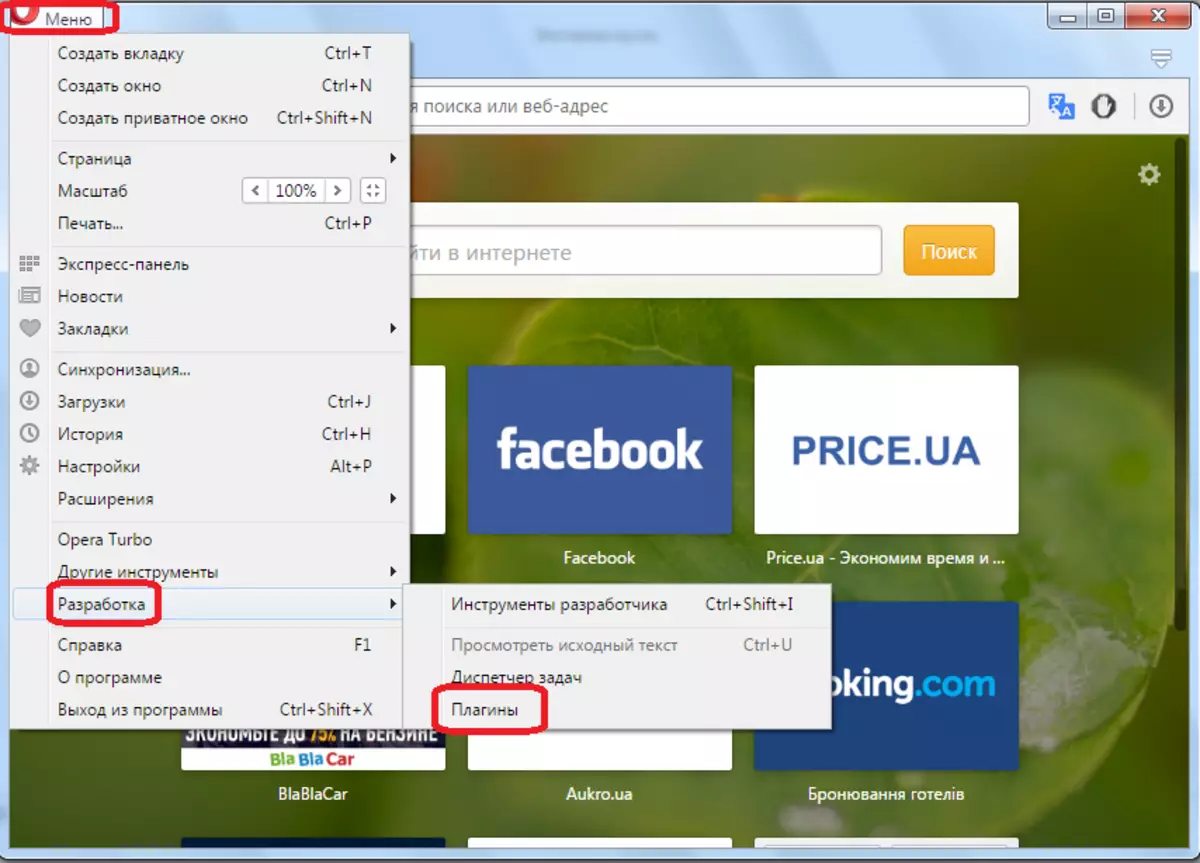
Thus, we fall into the plug-ins.
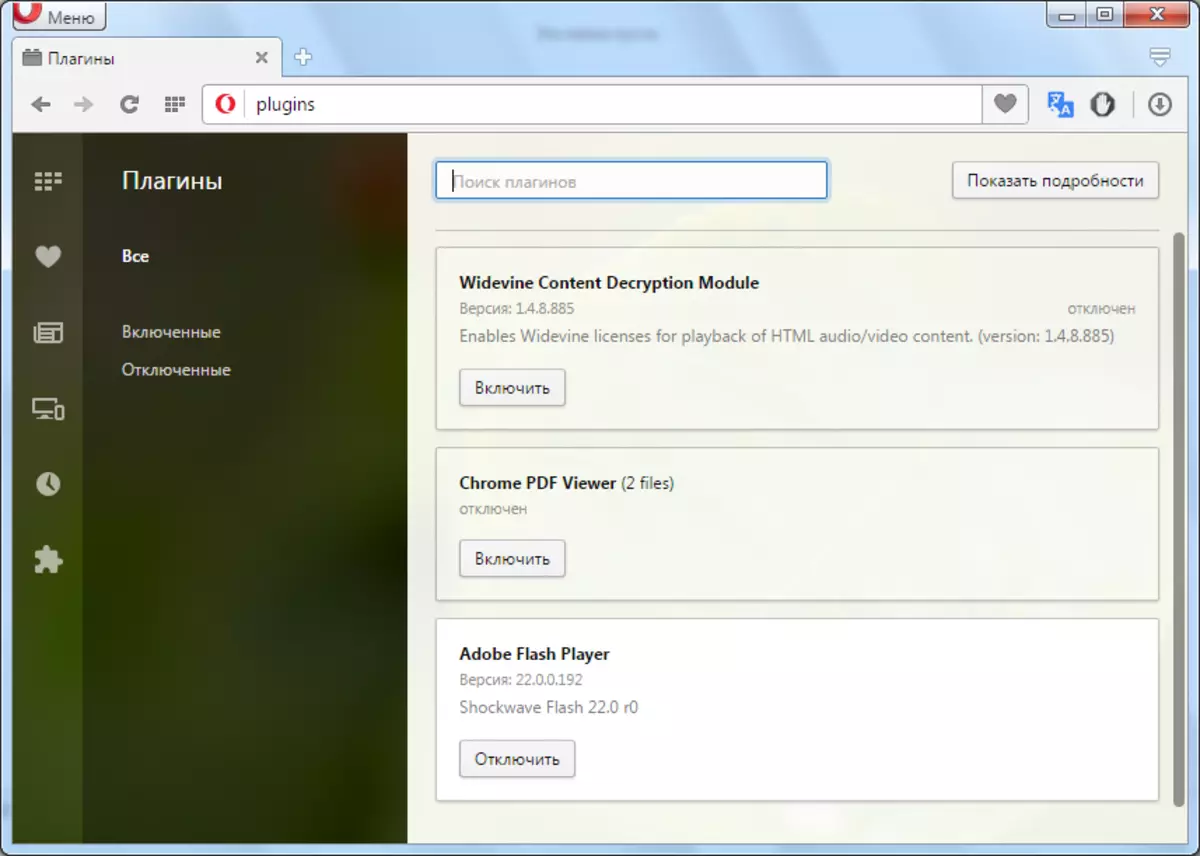
There is a simpler way to go to this section. But, for people who do not know about him, it is even more complicated to use it than the previous method. And it is enough just to enter the expression "Opera: plugins" to the browser address bar, and press the ENTER button on the keyboard.
Inclusion plugin
In the plug-ins manage opened, to more conveniently view the disconnected elements, especially if there are many of them, go to the "Disabled" section.

Before us appear non-functioning plagins of the opera browser. In order to resume work, it is enough to click on the "Enable" button under each of them.
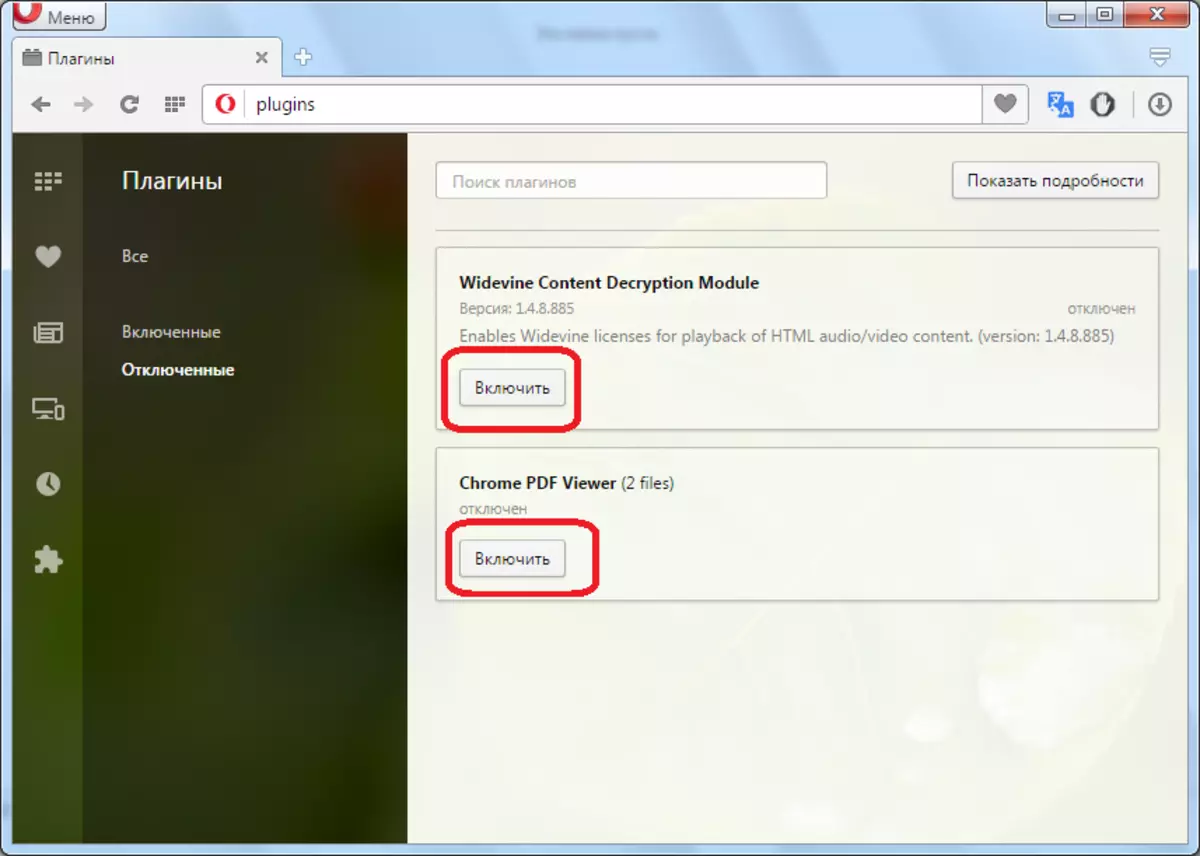
As we can see, the names of the plugins disappeared from the list of disconnected elements. To check if they turned on, go to the "Included" section.
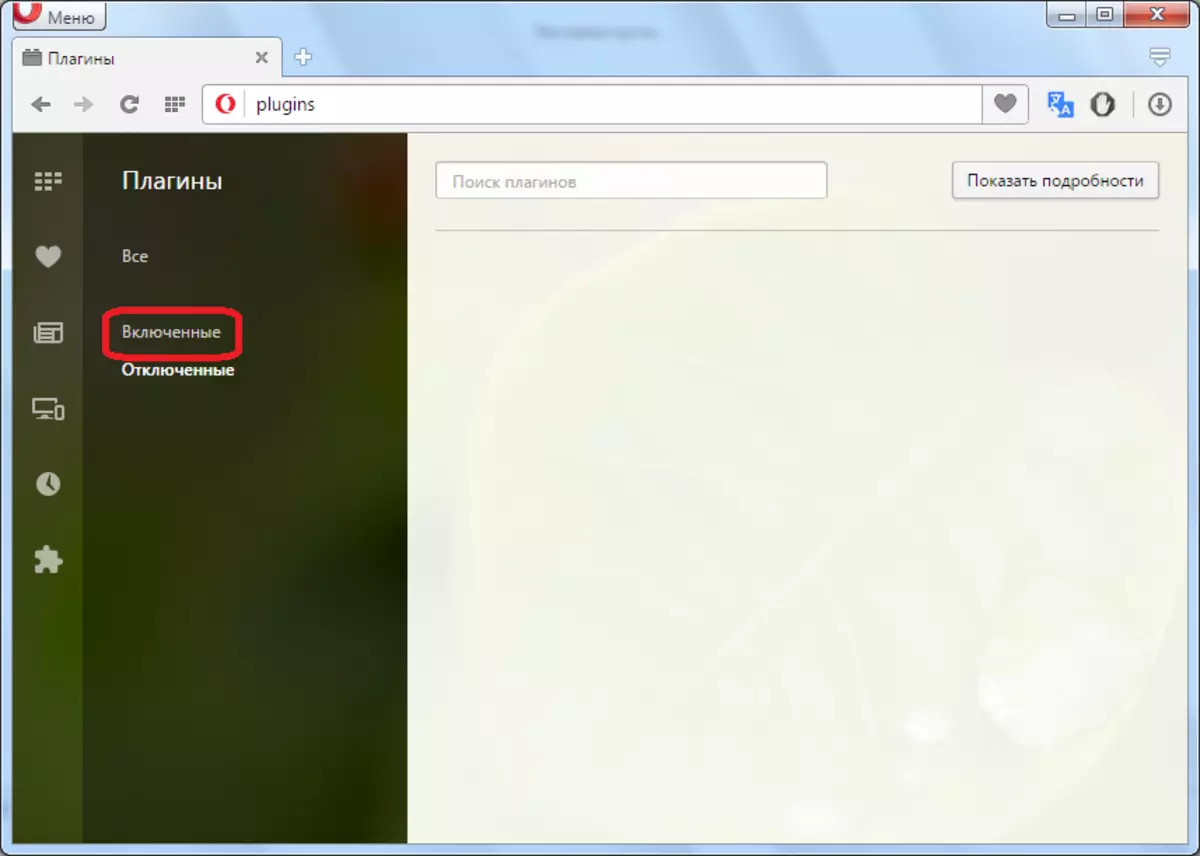
The plugins appeared in this section, which means that they function, and we made the inclusion procedure.
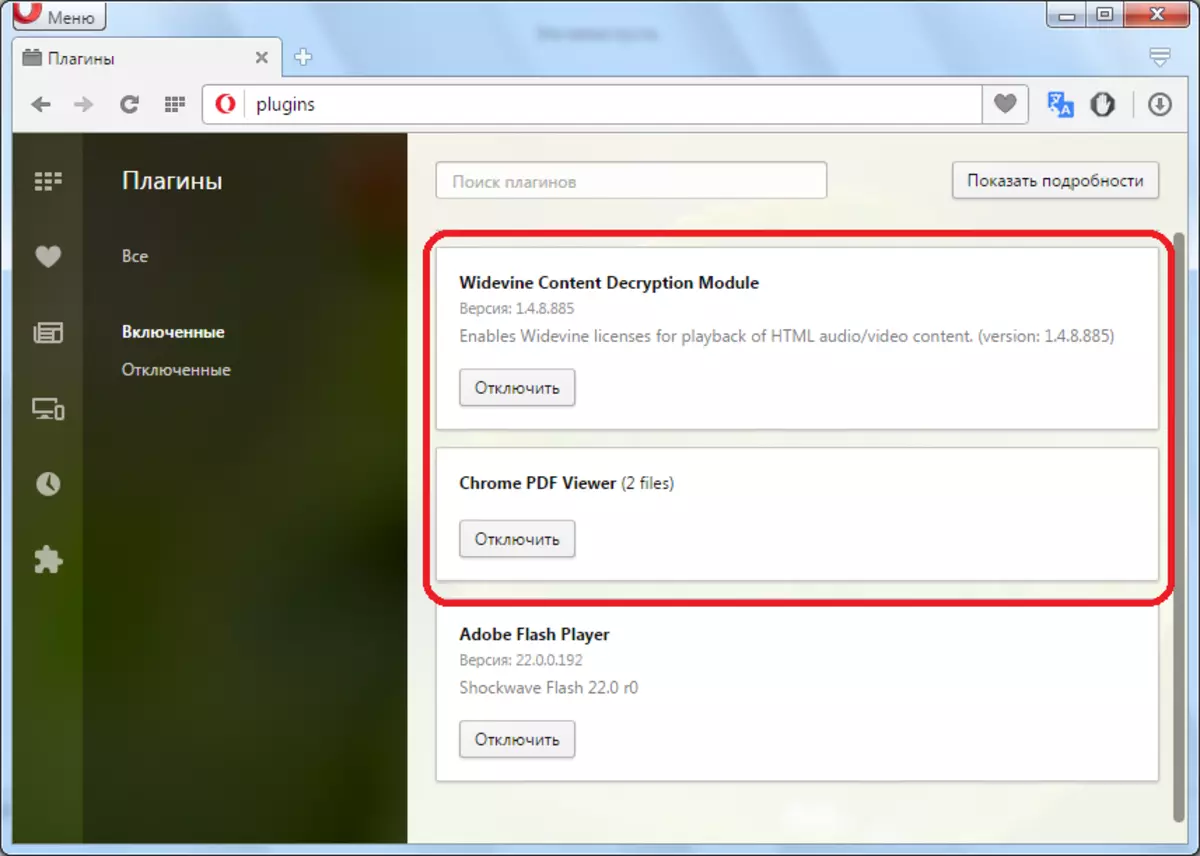
Important!
Starting from Opera 44, the developers removed a separate section to configure plugins in the browser. Thus, the method described above has ceased to be relevant. Currently, there is no possibility of full disabling, and accordingly, and enable the user. However, it is possible to disable the functions for which the plug-in data is responding, in the section of the browser's general settings.
Currently, only three plugins are built into the opera:
- Flash Player (Playing Flash Content);
- Chrome PDF (View PDF documents);
- WIDEVINE CDM (work protected content).
Add other plugins can not. All these elements are embedded in the developer's browser, and it is impossible to remove them. The user cannot affect the operation of the "WIDEVINE CDM" plugin. But the functions that run "Flash Player" and "Chrome PDF", the user can turn off through the settings. Although by default they are always included. Accordingly, if these functions were disabled manually, in the future there may be necessary to include them. Let's figure it out how to activate the functions of the two specified plug-ins.
- Click Menu. In the list that opens, select "Settings". Or simply use the ALT + P combination.
- In the settings window that opens, move to the Sites section.
- To enable the Flash Player plugin function in the open section, find the Flash unit. If the radio button is activated in the "Block Flash start on sites" position, then this means that the function of the specified plug-in is disabled.
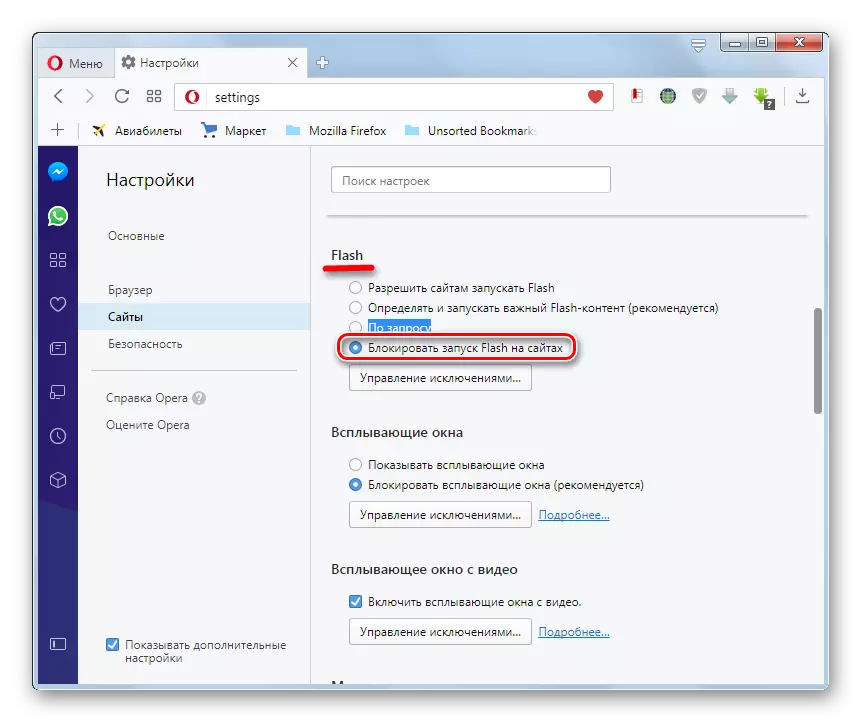
For its unconditional inclusion, you should set the switch to the "Allow sites to run Flash".

If you want to include a function with limitations, the switch should be rearranged to the "Determine and Running Important Flash-Content" or "on request".
- To enable the "Chrome PDF" plugin function in the same section, go to the PDF Documents block. It is located at the very bottom. If about the "Open PDF files in an application set by default for viewing PDF" is a tick, then this means that the function of the built-in PDF viewer browser is disabled. All PDF documents will open not in the browser window, but through the standard program that is assigned in the system registry by default application to work with this format.
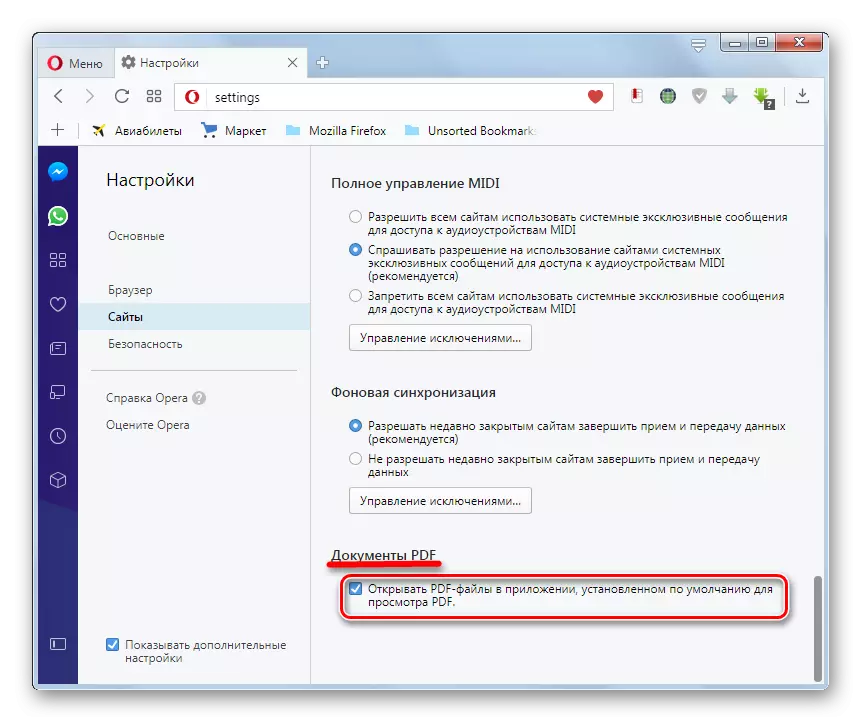
To activate the function of the "Chrome PDF" plugin, you just need to remove the specified check mark. Now the PDF documents located on the Internet will open through the Opera Interface.
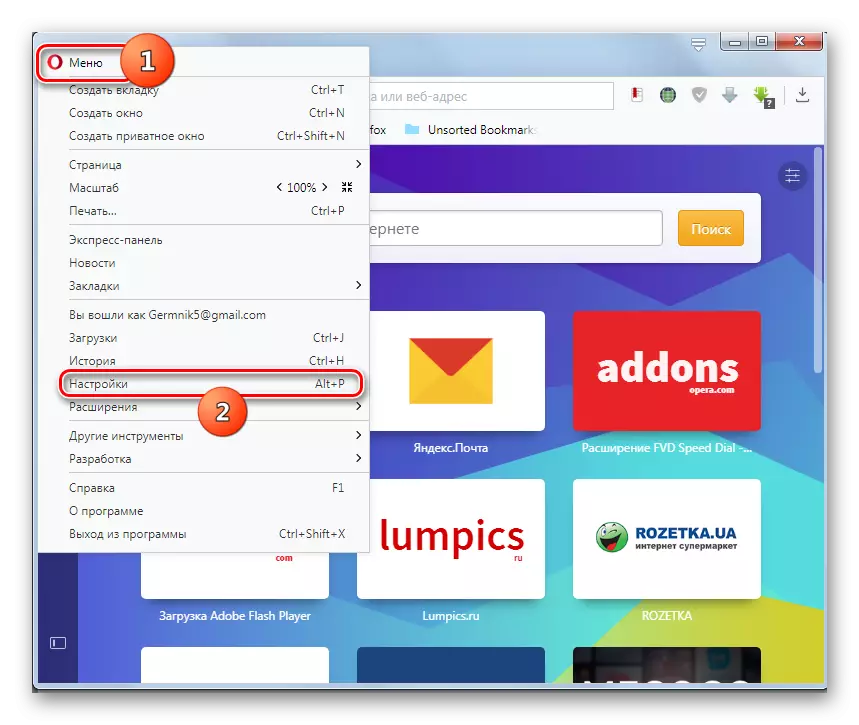
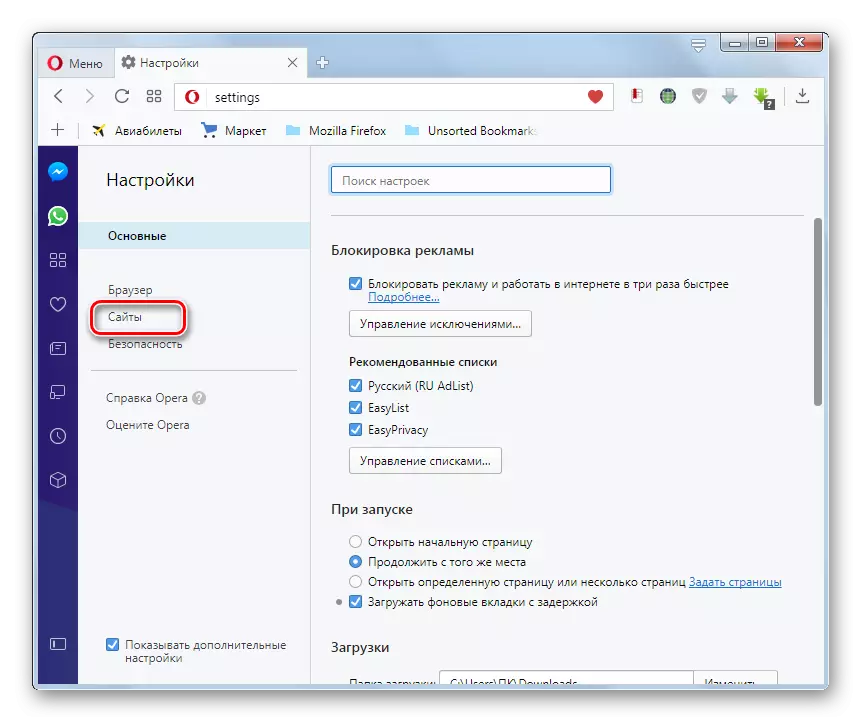


Previously, turn on the plugin in the opera's browser was quite simple, going to the appropriate section. Now the parameters for which the few plugins remain in the browser are governed in the same section where other opera settings are placed. It is there that the functions of plugins are now activated.
